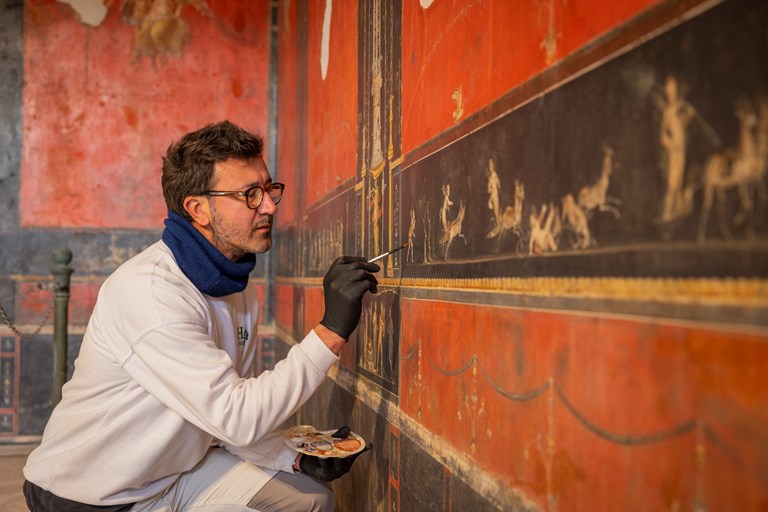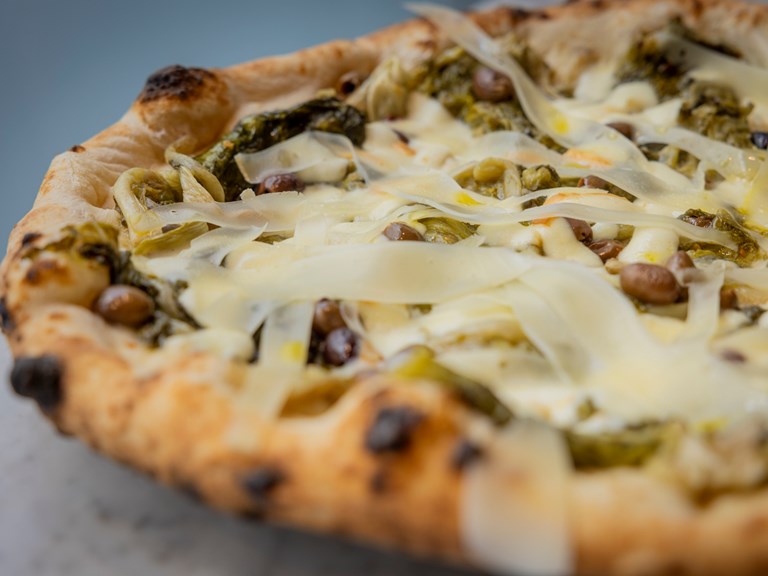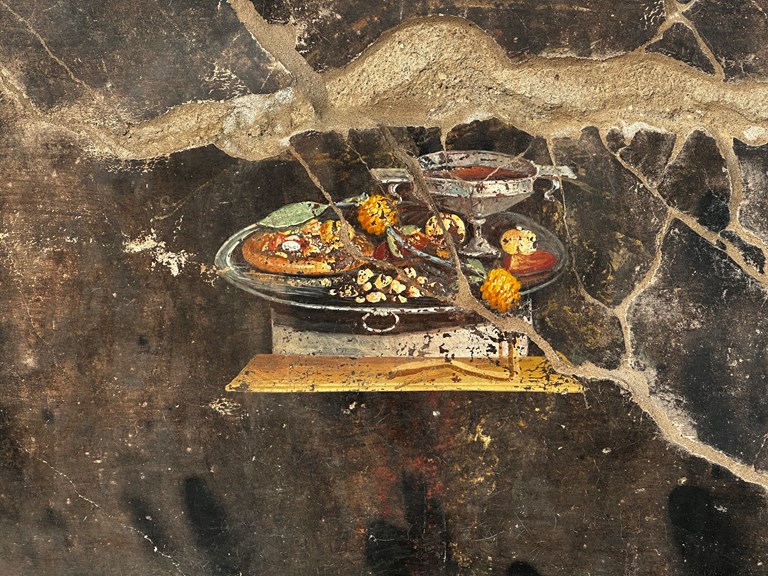POMPEII'S SISTINE CHAPEL
26.01.2023 NAPLES & AROUND
That house is the Casa dei Vettii, the most recently unveiled – and artistically one of the most dazzling – of around 25 domestic dwellings that are currently open to visitors in Pompeii, the Ancient Roman town destroyed by the eruption of Vesuvius in the autumn of AD79.
This large property, which was almost certainly owned by two former slaves who had become rich wine merchants, has been closed for the last twenty years. Zuchtriegel’s predecessor at Pompeii, Massimo Osanna, now the Director General of Italy’s state museums, calls the reopening “an epochal event”.
The 10 January media announcement was carried by news outlets around the world, with many choosing to focus on the phallic and erotic imagery on display in what would have been one of the more sumptuous of Pompeii’s middle-class dwellings.
In its report, The Guardian put the sexual agenda front and centre, opening with a sentence about “an ornate house… containing a fresco featuring a huge phallus”. Esquire magazine went even further, headlining its coverage of the house’s reopening “This Fresco of a God-Sized Penis Proves Even the Romans Were Obsessed With Big Dick Energy”.
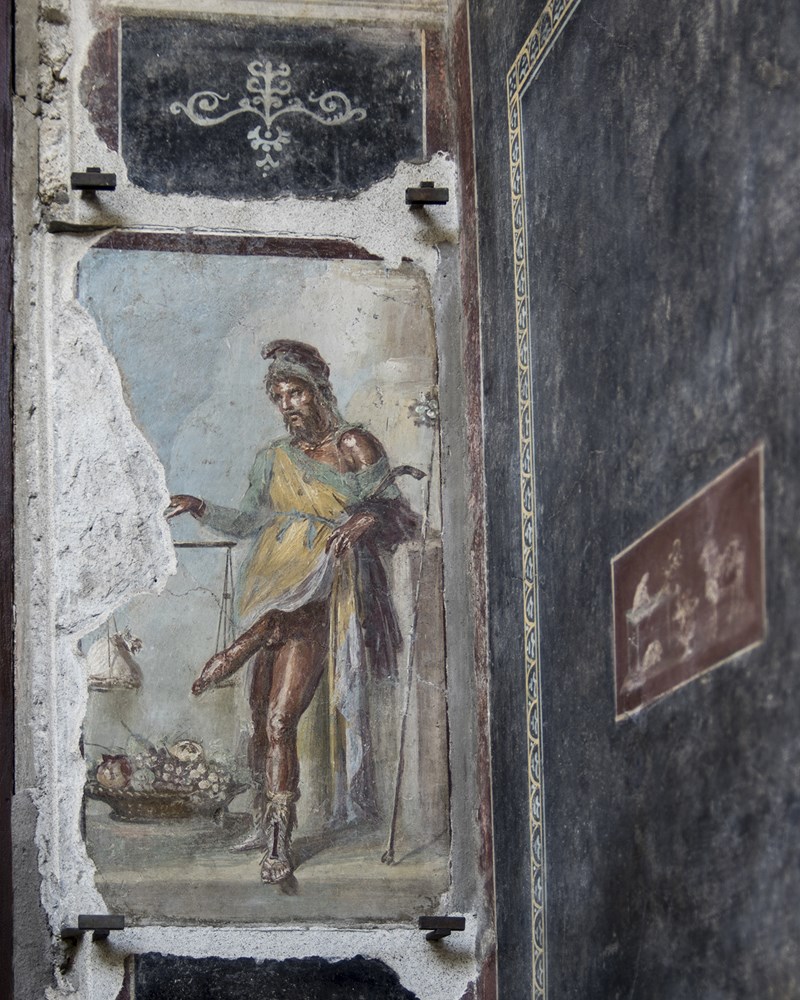
The probable owners of the Casa dei Vettii, Aulus Vettius Restitutus and Aulus Vettius Conviva, have been painted as the Ancient Roman equivalent of frat-boy buddies, so unreconstructed in their macho attitudes that their go-to divinity was Priapus, the permanently tumescent god of male fertility. After all, Priapus appears in the house both in that wall-painting in the entrance, weighing his huge member on a pair of scales against a bag of money, and in a marble statue in the garden courtyard (whose thrusting appendage, one likes to imagine, would have made a good peg for the gardeners to hang their hats on). Back in the day, this was a fountain: a stream of water would have gushed from the statue’s projecting ‘hat stand’.
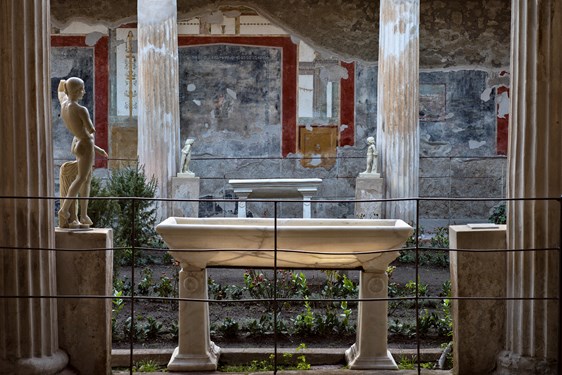
View
The two owners were likely not brothers, but former slaves who had worked under the same master before being freed; they may even have been same-sex life partners. There is strong evidence that they kept a room inside the house that operated as a brothel, though whether they ran the game as pimps or simply rented out the room is not known. If the former is true, this would have been a sideline, as it’s known that their main source of income was the wine trade – the proceeds of which were stored in great bronze chests on either side of the entrance atrium, presumably so guests knew exactly who they were dealing with.
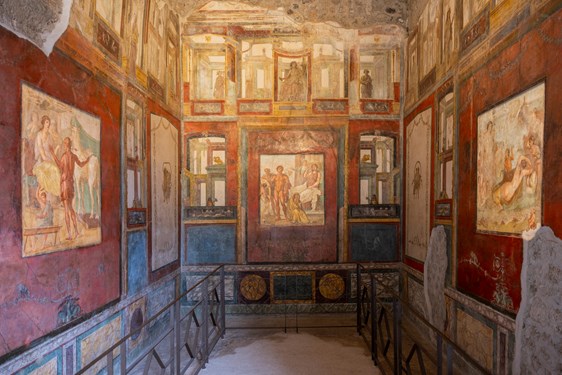
View
It's possible that Mr Conviva and Mr Restitutus (meaning ‘Given Back’, the latter was a common surname for a freed slave) were indeed flashy self-made men, Pompeiian predecessors of all those loud 1980s Wall Street traders. But other signs suggest the truth may be more nuanced. Many of the rooms that surrounded the central peristyle are decorated with wall paintings that attest to the taste and culture of the owners, finely executed mythological scenes in the so-called Fourth Style of Pompeiian mural decoration.
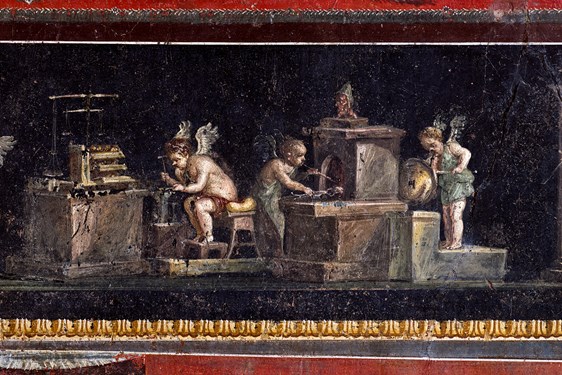
View
There’s a delightful frieze showing cupids labouring away at some of the trades common in the Roman city at this time – metalworking, washing laundry, crafting gold jewelry, baking bread, making floral wreaths – which may have been intended as a kind of badge of pride, a mercantile rebuke to the senatorial class who made their money from landed estates and political corruption. And as British classicist Mary Beard informs us in her 2008 book Pompeii – The Life of a Roman Town, even that fresco of Priapus on the entrance doorjamb concealed an erudite pun – on the words penis and pendere, ‘to weigh’.
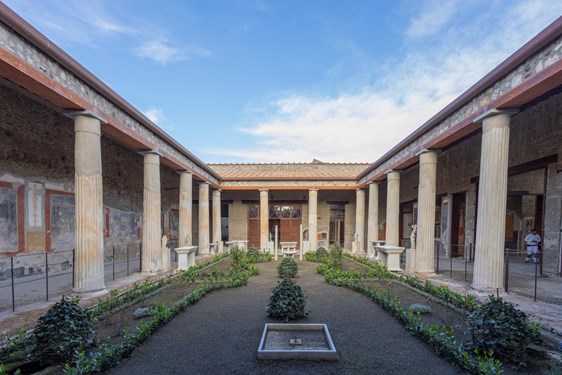
View
For Pompeii’s German-Italian director Zuchtriegel, the House of the Vettii is further proof of the social and ethnic stratification of Pompeii, which has become a clear focus under his watch. “The owners”, he declares, “who were freedmen and thus former slaves, testify to a level of social mobility which would have been unthinkable two centuries previously. Their wealth stemmed from commerce in agricultural produce from the territory around Pompeii, but it would appear that prostitution was also practised in their house by a Greek slave woman who belonged to the most deprived groups of society”.
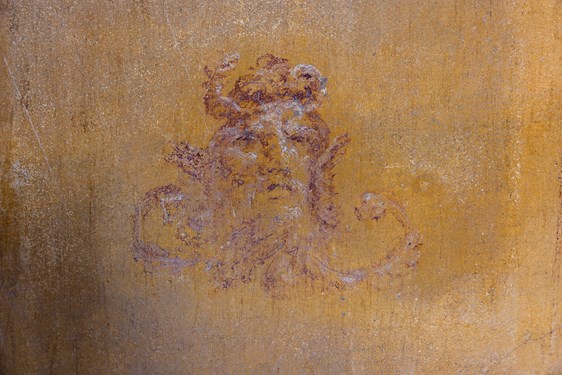
View
What visitors see when they enter the House of the Vettii today is a big improvement on what was on view prior to its closure in 2003. Among the challenges faced by a complex restoration effort that began in 2016 was the removal of layers of wax that had been applied to the wall paintings by previous restorers in a misguided attempt to protect them and enhance the colours.
The crude concrete covering that had been created to shelter the interior from the elements was replaced with a pitched tiled roof similar to those of ancient Pompeii, and copies of statues found in the house (today preserved in museums and storerooms) were set on their original plinths. Even the garden at the centre of the residence’s peristyle courtyard was restored using species from Pompeii’s on-site nursery, which specializes in plants that would have adorned the gardens and open spaces of the Roman town.
Photos:
Opening shot (restorer), Sala Ixion, Garden Courtyard with sky, Yellow wall face © Roberto Salomone
Priapus wall painting © Silvia Vacca, Courtesy Parco archeologico di Pompei
Courtyard with priapic statue, Artisan cherubs © Luigi Spina, Courtesy Parco archeologico di Pompei
Le Sirenuse Newsletter
Stay up to date
Sign up to our newsletter for regular updates on Amalfi Coast stories, events, recipes and glorious sunsets
